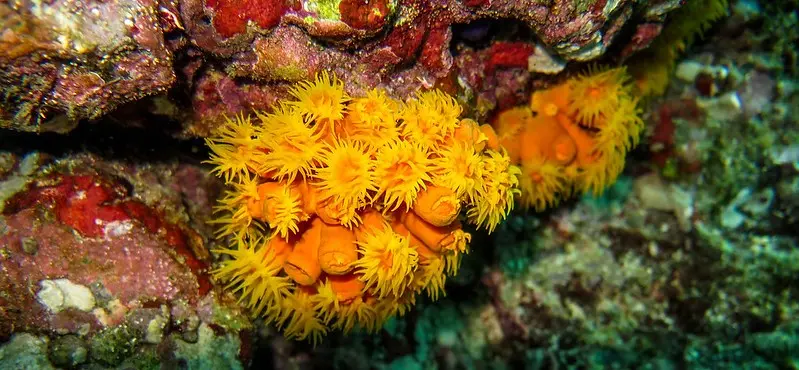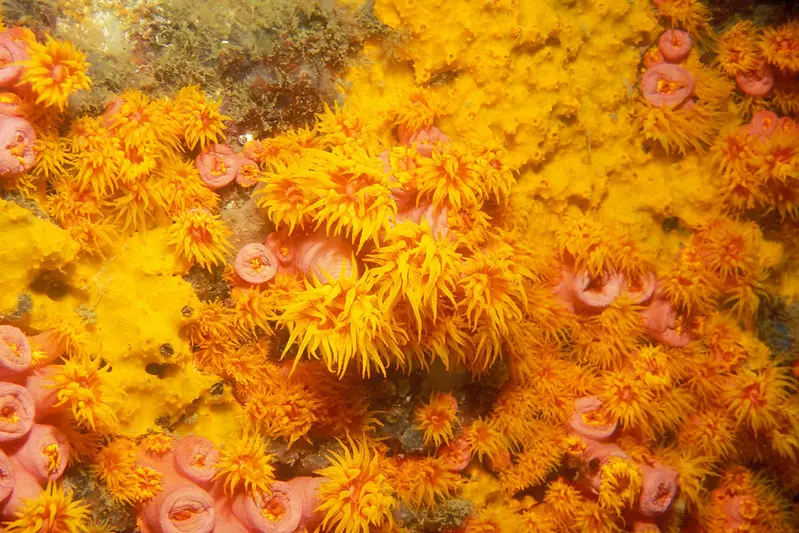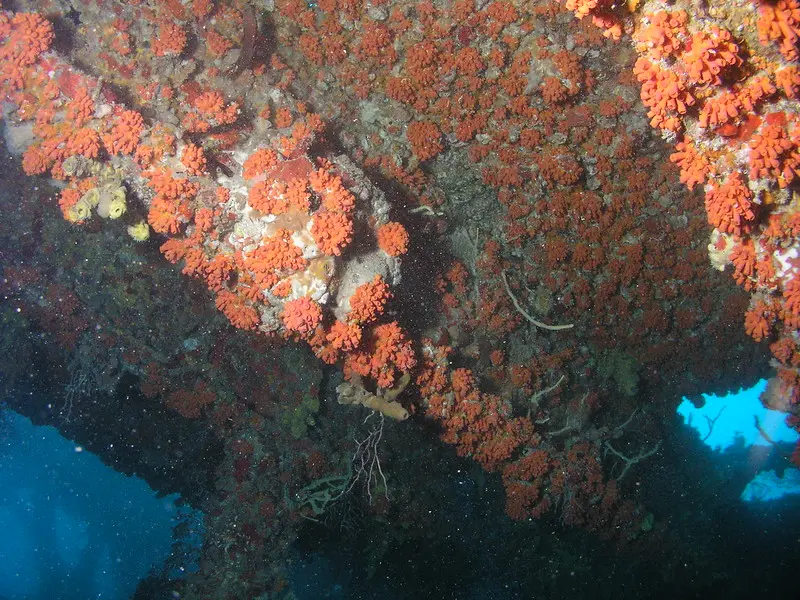Impact of Orange cup coral in Brazilian waters
There are two species of Orange cup coral that have caused concern, the Tubastraea coccinea and the Tubastraea tagusensis. Both are found along the Brazilian coast, but are native to the Pacific Ocean.
They began invading the Caribbean and the Gulf of Mexico in the 1940s and were accidentally brought to Brazil in the 1980s on the hulls of ships or on oil platforms.
According to the Ministry of the Environment, there are now reports of their presence along almost the entire Brazilian coast - from Santa Catarina to Sergipe - on natural rocky shores or artificial structures such as piers, buoys and oil platforms.

Invasive species, such as the sun coral, are any living organisms found outside their natural range that threaten the biodiversity or natural ecosystem of a given region. They can also cause economic or health damage, and may have socio-cultural impacts. Both T. coccinea and T. tagusensis possess several undesirable characteristics of invasive species, such as accelerated growth and reproduction and easy dispersal.
At peak reproduction, an adult sun coral colony can produce more than a thousand larvae per day. In good conditions-such as along the southeastern coast, they can spread to the point where they dominate an entire environment, replacing native species and changing the entire marine ecology.
Factors that normally limit the existence of other organisms in the marine environment, such as light, pH, salinity, and dissolved oxygen, do not seem to affect them, as they are highly resistant to environmental changes.
In addition to having no natural predators in Brazilian waters, the two species of orange cup coral have chemical defenses through the production of substances with antifouling and antipredator properties and the release of substances capable of causing necrosis in other species. They also have the ability to regenerate from small residual fragments.

In Alcatrazes, 35 km south of São Sebastião Island, on the northern coast of São Paulo, sun corals represent a major threat to the native fauna. Discovered in 2011 at an advanced stage, they have been monitored and removed to prevent them from becoming an even bigger plague, although complete eradication is considered impossible.
The only way to control their spread is to remove it from the environment by hand, colony by colony, using chisels and hammers. Thousands of colonies and tons of orange cup coral have already been removed by various non-governmental organizations in hundreds of operations, reducing the number of sun coral larvae that could have been spread by more than 2 billion.
On islands close to Alcatrazes, where no management has been done, the infestation is even higher. Buzios Island and Laje de Santos State Park are among the most affected: there, the coral has already caused significant damage, with several coasts almost completely covered by this single coral.
The chances of success in eradicating the bioinvader decrease with the difficulty of access - the deeper a species is found, the less likely it is to be controlled. And besides depth, sun coral doesn’t need much light to survive, so it has a habit of growing in crevices, dark places that are difficult to access, another limiting factor for management that prevents manual and even visual access.

In Brazil, approximately 95% of all foreign trade is transported by sea. Similarly, shipping has increased by 130% in the last thirty years and now accounts for 80% of global trade.
These high flows of ships between ports significantly increase the risk of introducing invasive exotic species such as the sun coral.
There are several measures that have been developed by different sectors of society in Brazil and around the world to combat, prevent and control the proliferation of coral sunfish, but most of the currently feasible methods have limited efficiency.
Of course, a definitive solution is not easy: since a large part of world trade depends on maritime transport, it is even more worrying that there are no estimates of a timeframe in which invasive species will no longer be introduced outside their original habitats.
A healthy environment requires a diversity of species and habitats. Native coral reefs provide shelter for many species of crustaceans, algae and fish that live along the Brazilian coast. Similarly, in each region, animals and the environment adapt to each other, ensuring the balance of the ecosystem. Therefore, the control of invasive species is important not only for the conservation of native corals, but also for all marine life and economic activities related to the coastal environment.
Read more: O controle da invasão do coral-sol no Brasil não é uma causa perdida
Plano nacional de prevenção, controle e monitoramento no Brasil - MMA, Ibama e ICMBio 2020
Marinha Mil-Relatório-Coral-sol
